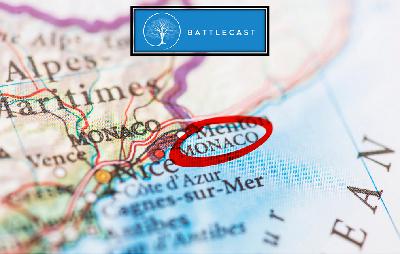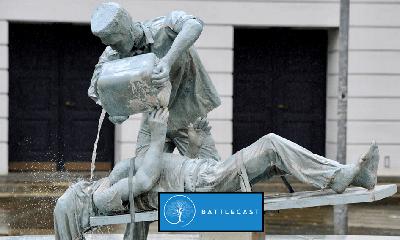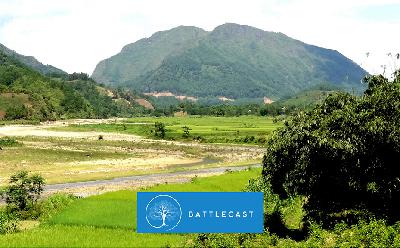An Universal Institution: The Definitive History of Torture /// 95
Description
“Torture was legal, morally accepted, and commonplace in most ancient, medieval, and early modern societies.” This was the way historian Christopher Einolf succinctly described the history of torture: ubiquitous, common; in short: everywhere. Torture is a sort “reverse” gospel – as it is written in Il Libro Dell’avversario, chapter 6:
And when the wealthy governors heard that their Master had taught the rulers how to better exploit the weakest members of their own nations, they gathered themselves together. Then one of them, which was a legal scholar, asked him a question, flattering him, and saying:
Master, which is the great commandment in the law?
Satan said unto him: What law? The greatest command is simply this: Thou shalt love Yourself, thy God, with all thy heart, and with all thy soul, and with all thy mind. This is the first and greatest commandment.
And the second is like unto it: Thy neighbor shall love thee as a God.
On these two commandments hang all the power and the necromancers.
I can think of no better introduction to the definitive history of torture than this infamous Italian quote. What is torture but an absolute, physical negation of the Other? What is torture by a total elevation – a trampling! – of one man upon the backs of his fellow creatures? Calvin said all men are evil by nature. Our historians timidly and demurely – like unpracticed virgins! – tell us torture has been morally accepted and present in almost all human societies. In other words, our historians are telling us Calvin was right.
This is the definitive history of one of the oldest and most enduring institutions of humanity: Torture.
It’s all here and it’s all free on Battlecast – the world’s foremost podcast on violence and its sociopolitical impact.
<figure class="wp-block-audio"></figure>
Download episode 95 here: download link
The Definitive History of Torture Maps and Images:
Extensive maps and images are posted to the Historical Atlas of Torture located here
Music Source:
Karl Casey @ White Bat Audio /// website: karlcasey.bandcamp.com
The Definitive History of Torture References:
Amnesty International. (November, 1976). Amnesty International Briefing: Iran.
Amnesty International. (1972). Report on Allegations of Torture in Brazil. Amnesty International Publications.
Amnesty International. (2015). No end in sight: Torture and Forced Confessions in China.
The (in)effectiveness of torture for combating insurgency by Christopher Michael Sullivan. Journal of Peace Research, May 2014, Vol. 51, No. 3.
U.S.-supported state terror: A history of police training in Latin America by Martha K. Huggins. Crime and Social Justice, 1987, No. 27/28, pp. 149-171.
A history of torture by Brian Innes. Amber books. 2017.
Torture as an instrument of national policy: France 1954–1962 by Philip Agee. The Black Scholar. 21:2, 66-70.
A history of the American people by Paul Johnson.
American torture: From the Cold War to Abu Ghraib and beyond by M. Otterman. 2007.
Britannica, The Editors of Encyclopaedia. “drawing and quartering”. Encyclopedia Britannica, March 27, 2024, https://www.britannica.com/topic/drawing-and-quartering.
Americans at war: Eyewitness accounts from the American Revolution to the 21st century. Volume 2. ABC-CLIO books. 2018. Edited by James Arnold.
Note – this is one of the best compendiums of eyewitness accounts of American war-fighting put into print and is well worth locating for anyone interested in American military history – L.W.
Torture behind bars: Role of the police force in India by John Aston. 2020.
Judging war crimes and torture: French justice and international criminal tribunals and commissions (1940-2005) by Yves Beigbeder.
Legacies of authoritarianism: Brazilian torturers’ and murderers’ reformulation of memory by Martha K. Huggins. Latin American Perspectives, Mar., 2000, Vol. 27, No. 2, pp. 57-78.
The Spanish invasion of Mexico: 1519-1521 by Charles M. Robinson III. 2004. Osprey publishing.
“My medicine is punishment”: A case of torture in early California, 1775–1776 by Claudio Saunt. Ethnohistory. 57:4 (Fall 2010).
A concise history of Brazil, second edition by Boris Fausto. 2014. Cambridge University Press.
The corruption of angels: The great inquisition of 1245-1246 by Mark Pegg. 2001. Princeton University Press.
Cruel Britannia: A secret history of torture by Ian Cobain. 2012.
The Albigensian Crusade by Jonathan Sumption. 2000.
Crusade, heresy and inquisition in the lands of the Crown of Aragon by Damian Smith. 2010. Brill.
Crypto-Judaism and The Spanish Inquisition by Michael Alpert.
The death of Aztec Tenochtitlan: The life of Mexico City by Barbara Mundy.
The Gulag Archipelago. Three Volumes. By Alexander Solzhenitsyn.
History taking after torture by Abi Rimmer. British Medical Journal, Vol. 349 (20 Oct 2014 – 26 Oct 2014).
Double‐blind: The torture case by Diana Taylor. Critical Inquiry, Vol. 33, No. 4, (Summer 2007).
Practical homicide investigation: Tactics, procedures, and forensic techniques by Vernon Geberth.
Practical homicide investigation checklist and field guide by Vernon Geberth.
Sex-related homicide and death investigation: Practical and clinical perspectives by Venon Geberth.
America in the Philippines, 1899-1902: The first torture scandal by Christopher Einolf.
The European witch craze of the 14th to 17th Centuries: A sociologist’s perspective by Nachman Ben-Yehuda. American Journal of Sociology, Vol. 86, No. 1 (Jul., 1980), pp. 1-31.
Eyewitnesses to the Indian Wars, 1865-1890, five volumes by Peter Cozzens. 2001. Stackpole books.
Facing the torturer by Francois Bizot.
The failure of constitutional torture prohibitions by Adam S. Chilton and Mila Versteeg. The Journal of Legal Studies, Vol. 44, No. 2 (June 2015), pp. 417-452.
God’s jury: The inquisition and the making of the modern world by Cullen Murphy.
Heaven or heresy: A history of the inquisition by Thomas Madden. 2007.
Heresy, crusade and inquisition in Southern France, 1100 – 1250 by Walter Wakefield.
History of flagellation by Joseph McCabe. 1946.
A history of Medieval heresy and inquisition by Jennifer Deane. 2011.
The history of the inquisition by Philippus van Limborch. 1816.
Tortures et supplices en France by Fernand Mitton. 1909.
Holy horrors: An illustrated history of religious murder by James Haught. 2000.
The Apache Wars: The hunt for Geronimo, the Apache Kid, and the captive boy who started the longest war in American history by Paul Hutton. 2017.
Illustrated catalogue of the historical and world-renowned collection of torture instruments from the royal castle of Nuremberg. Earl of Shrewbury and Talbor. 1893.
Imperial inquisitions by Steven Rutledge.
Pol Pot: Anatomy of a nightmare by Philip Short. 2006.
The Pol Pot regime: Race, power, and genocide in Cambodia under the Khmer Rouge, 1975-79 by Ben Kiernan. 2008.
Inquisition and society in the Kingdom of Valencia, 1478 – 1834 by Stephen Haliczer. 1990.
The inquisition: A history by Michael Thomsett.
The inquisition: A global History 1478-1834 by Francisco Bethencourt.
The Spanish inquisition: A historical revision by Henry Kamen. 2014.
Modern inquisitions, Peru and the colonial origins of the civilized world by Irene Silverblatt.
The washing of the spears by Donald Morris.
Reporting war; How foreign correspondents risked capture, torture and death to cover World War II by Ray Mosley. 2017.
On torture, or cruel, inhuman, and degrading treatment by Talal Asad. Social Research, Vol. 63, No. 4 (WINTER 1996), pp. 1081-1109.
On the ethics of torture by U. Steinhoff. 2013.
Torture by Peter Edwards. 1996.
Religious zealotry and political violence in Christianity and Islam by M.D. Litonjua. International Review of Modern Sociology, Vol. 35, No. 2, (Autumn 2009), pp. 307-331.
Regarding the pain of others by Susan Sontag.
On pain by Ernst Junger.
On killing by Dave Grossman.
The history of torture through the ages by George Scott. 2013. Routledge.
The Spanish inquisition by Helen Rawlings.
State torture: Interviewing perpetrators, discovering facilitators, theorizing cross-nationally proposing ‘Torutre 101.’ by Martha Huggins. State Crime Journal, Vol. 1, No. 1 (Spring 2012), pp. 45-69.
The Roman inquisition, the index and the Jews by Stephan Wendehorst.
Between Christian and Jew: Conversion and inquisition in the Crown of Aragon, 1250-1391 by Paola Tartakoff.
Terrorism, ticki
























